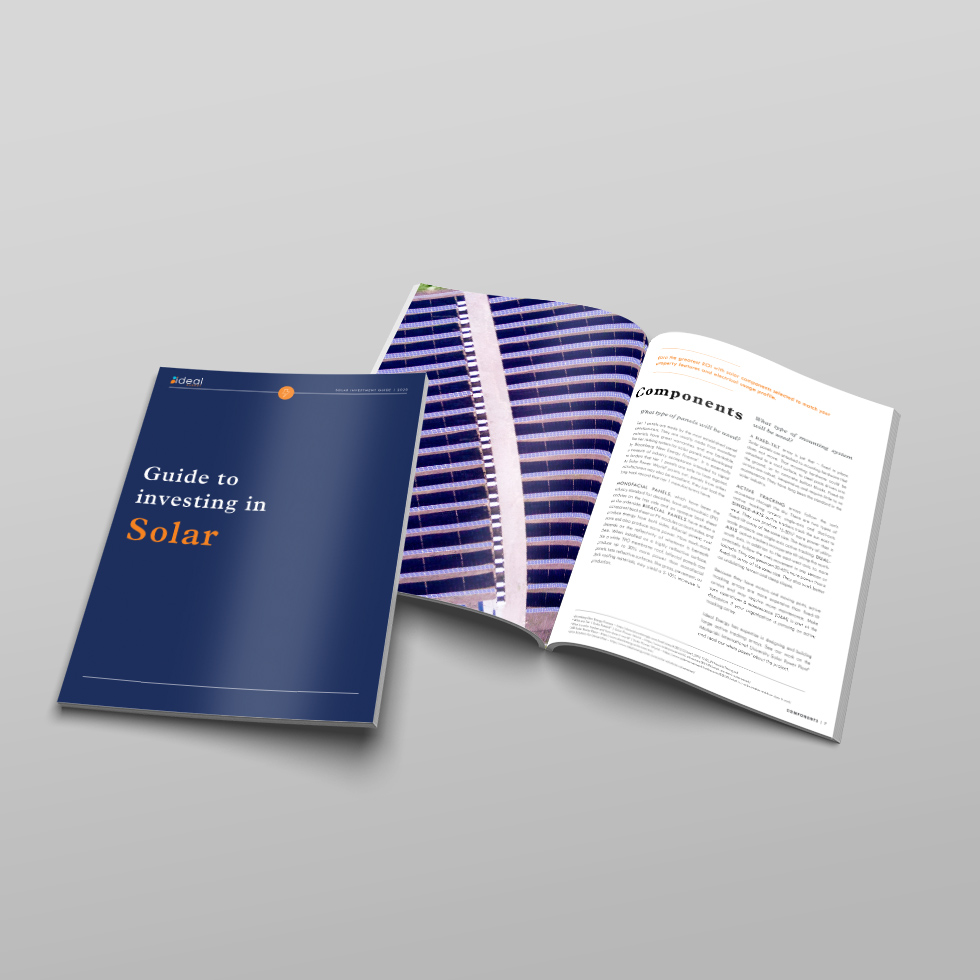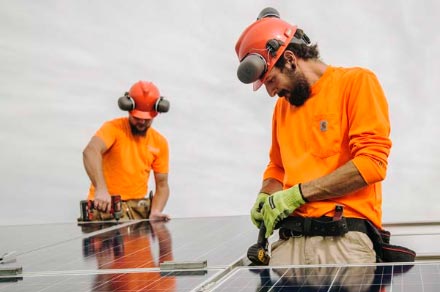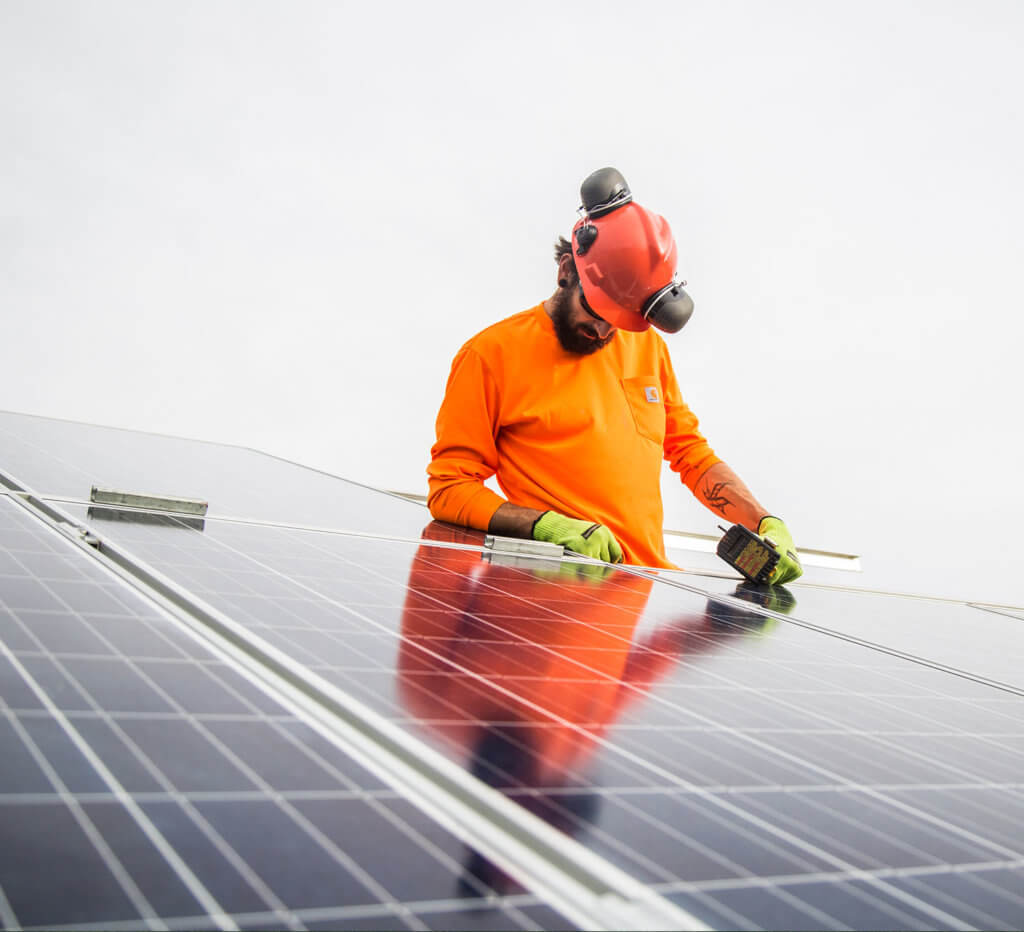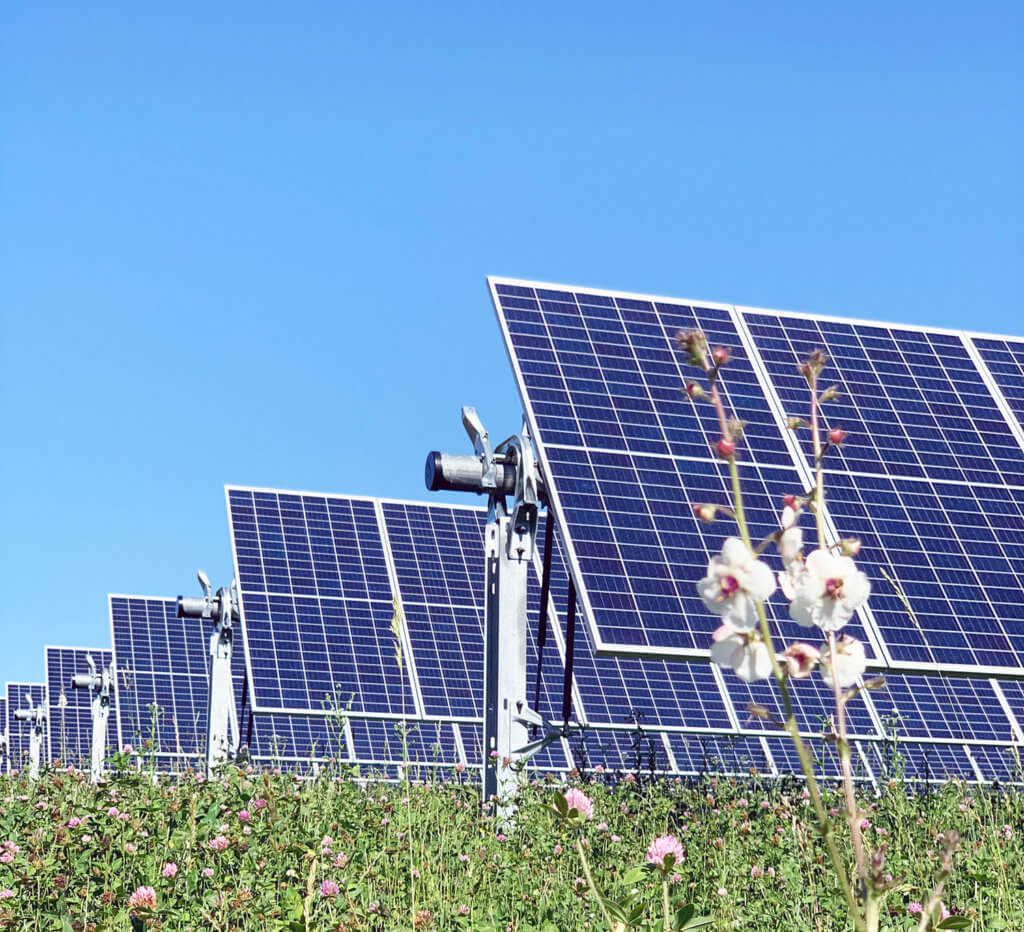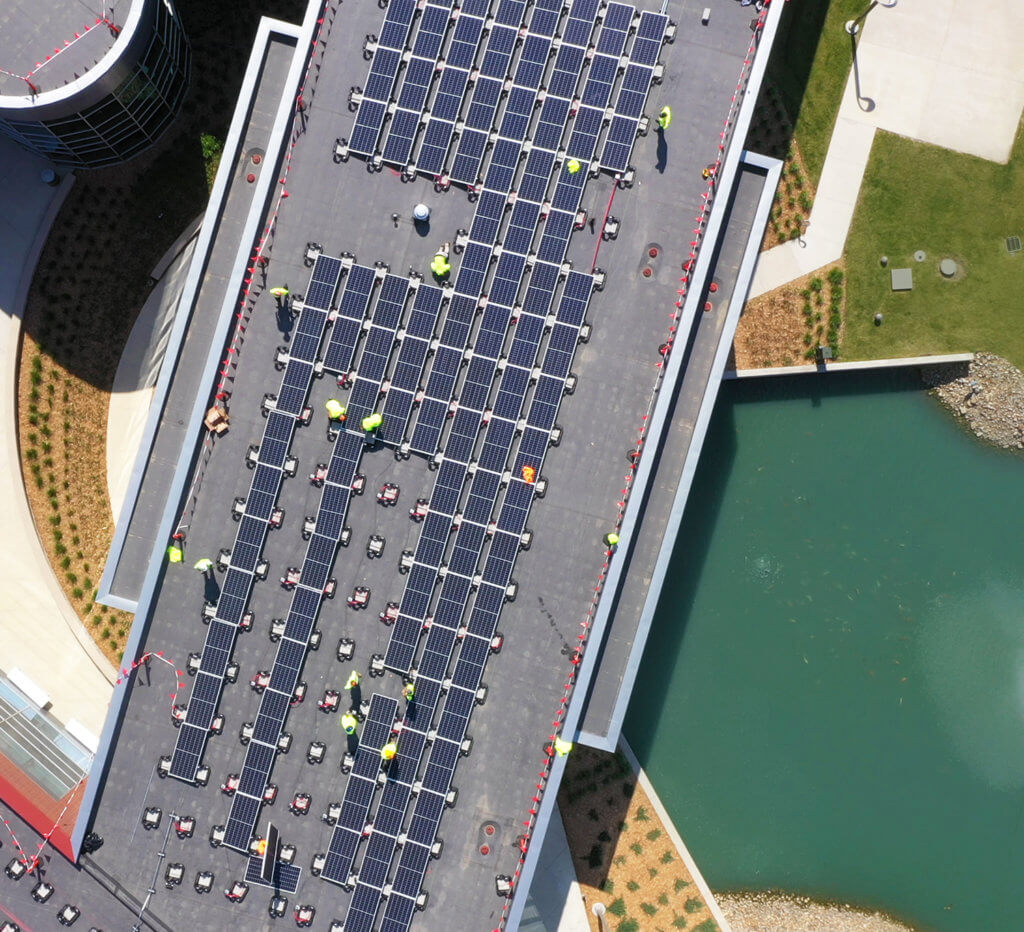What type of inverters will be used?
Inverters convert the direct current (DC) power from solar panels to alternating current (AC) that can be used in your home or business. They also track voltage, communicate with the grid, and provide emergency shutoff capability.
String inverters are located at the end of a row of solar panels and convert power from the entire row. Smaller residential installations might need only one string inverter. The primary benefit of string inverters is cost. In a 5kW installation – a typical size for a residential install – string inverters can save around $1,000 compared to microinverters. String inverters are durable, reliable, and can be located off the roof for easier maintenance. Downsides include panel-level monitoring and a less redundancy.
Microinverters sit behind each solar panel, converting power from just that one panel. The key advantage of microinverters is system efficiency. Microinverters can optimize the power output of each solar panel individually. This is especially helpful in larger arrays where shade, snowdrifts, or even cloud cover might differ from one part of the array to another. Microinverters also allow for more granular real-time performance metrics, easier expansion of the array later on, and in many cases longer warranties than string inverters. Downsides include cost, complexity, and potentially more exposure to the elements.
Power optimizers sit behind each individual panel, like microinverters. Unlike inverters, however, they do not convert power from DC to AC. In fact, they have to be used in conjunction with string inverters. Their purpose is to condition the power before sending it to an inverter. Power optimizers are often used along with battery energy storage systems. Conditioned power is sent to a battery while it is still DC and the string inverter is located downstream of the battery. This minimizes the number of times power has to be converted from DC to AC, while still allowing panel-level optimizing and monitoring.

